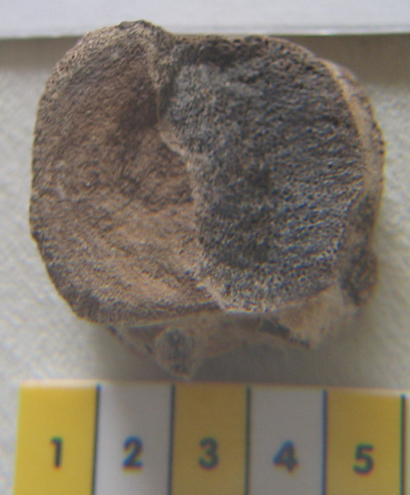Girl Finds Dinosaur Bone
When team members at Everything Dinosaur go into a school to do some dinosaur themed teaching or some other event such as a school talk, we demonstrate how young people are better at finding fossils than us “oldies”.
Children have two major advantages over adults when it comes to hunting for fossils. Firstly, their eyesight is normally much more acute. They can distinguish between different items on the ground and this can help them find unusual objects such as fossils. Secondly, your average seven year-old tends to be shorter than a grown up. This means that they are nearer the ground, and since fossils are found on the ground they are a lot nearer the action. It is worth remembering that more fossils are found by children than are dug up by palaeontologists – and one nine year-old girl from Virginia (USA) has just found her first dinosaur bone, as if to prove our point.
For Gabrielle Block a trip to Laurel Dinosaur Park in Maryland proved to be a day to remember when she found a small piece of dinosaur bone, believed to have been from a small, meat-eating dinosaur (theropod). This site had only recently been opened to the public to allow visitors to dig for fossils, visitors are allowed to go on their very own fossil hunting expeditions on the first and third Saturdays of every month. This new visitor attraction has certainly been put on the map thanks to Gabrielle’s discovery. The piece of 100 million-year-old dinosaur bone has been tentatively described as a tail bone (caudal vertebrae), this find has been sent to the experts at the Smithsonian Institute for further analysis.
Dinosaur Bone
The fragment of bone measures less than 3 cm long, and although it is too small to permit scientists to identify the dinosaur species, more fossilised bones and teeth may be found which might give scientists more help in working out the type of dinosaur this was.
The fossil was found amongst debris in a scree slope. When asked to reveal how she actually found the bone, on what was her first trip to the Maryland site, Gabrielle stated:
“I looked on top [of the dirt], got a handful and sorted through it”.
When mum Karin was shown the little fossil, she immediately thought her daughter had picked up something very unusual. For fourth grader, Gabrielle, she seems to have taken all the publicity generated in her stride, although she did admit to being “very excited” when she was told that she had found something so special.
It is younger sister Rachael (7 years) who is the budding palaeontologist of the Block family, when asked about her sister’s find she said she wished she had found the fossil herself but she was very happy for her big sister. Perhaps Rachael will get the chance to find her own dinosaur bone in the near future, as the family intend to return to the Dinosaur park before Christmas.
For experienced, amateur palaeontologist David Hacker, such a find is an amazing discovery and just the sort of good PR the park needs.
He stated:
“It’s a big deal in that this little girl, who has never hunted for fossils before, found something. I didn’t find my first vertebra out there for several years. How important it is to science is yet to be determined.”
A Dinosaur Bone
Picture credit: Everything Dinosaur
If more elements of the fossil can be discovered, then the experts at the Smithsonian might be able to identify it as a new dinosaur species. How about naming the new dinosaur “Gabriellosaurus” in honour of this observant young girl from Virginia.
For models of American dinosaurs but sadly, no “Gabriellosaurus” at present: Dinosaur Models and Toys.







One of the things we must realize if we are going to be in concert with cutting edge science is that the most widely used technique for dating fossils rests on the assumption that the amount of radiocarbon produced in the atmosphere has always been constant. For example, in Berkeley, a prominent scientist using the latest equipment, found that the shell of a living snail was over 3000 years old using the radiocarbon dating system.
Fossils dating can be very tricky in other ways as well, since, for example, dental material has been found to have more natural radiation than other materials.
Science is NOT saying that fossil dating with radiocarbon methods are to be doubted across the board. What is it saying is that there is a case to be made for an entirely different dating system based on organic chemical evolution that results in vastly different dating results.
Bottom line: We need to be careful when publicly dating things.
Fossil people tend to be a stark disagreement with other scientists, all looking at the same specimens.
Hi to whomever that it may concern, I myself found a seamler bone like the one you are displaying. My question is what’s its value if any at all have any idea of what please let me know
Suggest you email your local natural history museum, include pictures and as much information about where and when you found the item.